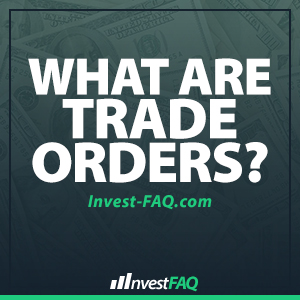 Day/GTC orders, limit orders, and stop-loss orders are three different types of orders you can place in the financial markets. This article concentrates on stocks. Each type of order has its own purpose and can be combined.
Day/GTC orders, limit orders, and stop-loss orders are three different types of orders you can place in the financial markets. This article concentrates on stocks. Each type of order has its own purpose and can be combined.
Trade Order Types
Contents
There are three main types of trade orders listed below:
- Day/GTC orders
- Limit orders
- Stop-loss orders
Let’s look at each of them to see how they are applied.
Day and GTC Orders
An order is canceled either when it is executed or at the end of a specific time period. A day order is canceled if it is not executed before the close of business on the same day it was placed. You can also leave the specific time period open when you place an order. This type of order is called a GTC order (good ’til cancelled) and has no set expiration date.
Limit Orders
Limit orders are placed to guarantee you will not sell a stock for less than the limit price, or buy for more than the limit price, provided that your order is executed. Of course, you might never buy or sell, but if you do, you are guaranteed that price or better.For example, if you want to buy XYZ if it drops down to $30, you can place a limit buy @ $30. If the price falls to $30 the broker will attempt to buy it for $30. If it goes up immediately afterwards you might miss out. Similarly you might want to sell your stock if it goes up to $40, so you place a limit sell @ $40.
Stop-loss Orders
A stop-loss order, as the name suggests, is designed to stop a loss. If you bought a stock and worry about it falling too low, you might place a stop-loss sell order at $20 to sell that stock when the price hits $20. If the next trade after it hits $20 is 19 1/2, then you would sell at 19 1/2. In effect the stop loss sell turns into a market order as soon as the exchange price hits that figure.Note that the NASDAQ does not officially accept stop loss orders since each market maker sets his own prices. Which of the several market makers would get to apply the stop loss? However, many brokers will simulate stop-loss orders on their own internal systems, often in conjunction with their own market makers.
Their internal computers follow one or perhaps several market makers and if one of them quotes a bid which trips the simulated stop order, the broker will enter a real order (perhaps with a limit – NASDAQ does recognize limits) with that market maker. Of course by that time the price might have fallen, and if there was a limit it might not get filled. All these simulated stop orders are doing is pretending they are entering real stops (these are not official stop loss orders in the sense that a stock exchange stop order is), and some brokers who work for the firms that offer this service might not even understand the simulation issue.If you sell a stock short, you can protect yourself against losses if the price goes too high using a stop-loss order. In that case you might place a stop-loss buy order on the short position, which turns into a market order when the price goes up to that figure.
Trade Order Example
Let’s combine a stop loss with a limit sell and a day order.
XYZ – Stop-Loss Sell Limit @ 30 – Day Order Only
The day order part is simple — the order expires at the end of the day.
The stop-loss sell portion by itself would convert to a sell at market if the price drops down to $30. But since it is a stop-loss sell limit order, it converts to a limit order @ $30 if the price drops to $30.
It is possible the price drops to 29 1/2 and doesn’t come back to $30 and so you never do sell the stock.
Note the difference between a limit sell @ $30 and a stop-loss sell limit @ $30 — the first will sell at market if the price is anywhere above $30. The second will not convert to a sell order (a limit order in this case) until the price drops to $30.
You can also work these same combinations for short sales and for covering losses of short stock.
Article Credits:
Contributed-By: Art Kamlet
